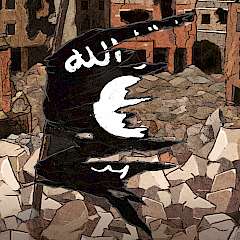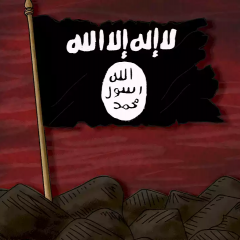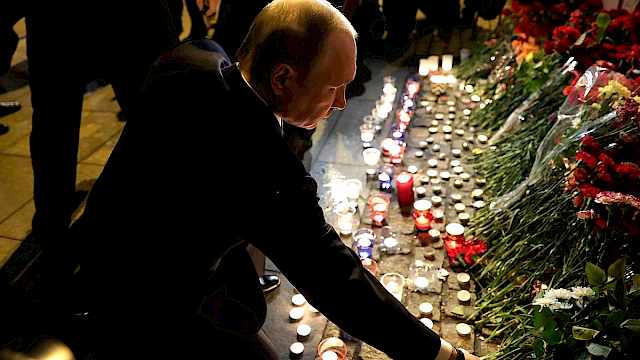The decision by the Islamic State group to proclaim a ‘caliphate’ in June 2014 was a watershed moment in the history of jihadism, but it was far from the first attempt at jihadist state-building. Examining the reasons for the failure of one such project, the Caucasus Emirate (IK) in Russia’s North Caucasus, and the demise of the regional insurgency under the banners of both IK and IS can help us better understand the relationship between a group’s ideology and its composition and operating environment.
In October 2007, veteran Chechen field commander Dokka Umarov announced the establishment of the IK, finalising the victory of the North Caucasus insurgency’s Islamist wing over nationalist-separatists in its historic Chechen core. This self-proclaimed jihadist state united insurgent groups across the region, albeit without controlling any territory. Yet, in December 2014, the IK started to fracture, and a combination of deaths and defections meant that, by late 2015, it had largely ceased to exist as a functioning organisation.
The Syrian conflict undoubtedly accelerated the decline of the IK. Reflecting divisions in Syria – among both North Caucasian groups and in the broader jihadist community – the IK found itself split between IS and its opponents. While the IK’s senior leadership sided with al-Qaeda, many commanders and rank-and-file rebels favoured IS.
As a result, the IK experienced large-scale defections and IS formalised its advance into the region in July 2015 with the establishment of the Caucasus Wilayah (IS/CW) as an official province of its caliphate. The IK’s already precarious position was further undermined by security service operations that killed many of its remaining leaders.
The downward trend in violence in the North Caucasus, however, predates the large-scale involvement of North Caucasians in Syria, with two contradictory processes contributing to the IK’s initial decline.
First, the authorities from 2010 onwards pursued several soft policies, including local commissions to rehabilitate insurgents and increased engagement with Salafi communities. Extremist ideologies always seek to tap into and shape existing grievances, and addressing some of these grievances undermined the insurgency’s support base and recruitment potential.
Extremist ideologies always seek to tap into and shape existing grievances
Second, the security services increased the pressure on the insurgency prior to and subsequent to the 2014 Winter Olympics. While this signalled the end of the soft measures – and is arguably one of the reasons why the long-term foundations for stability have not been laid – increased security measures made it much more difficult for the insurgency to operate.
In both cases, changes in the IK’s operating environment had a significant impact on its appeal.
A further explanation for the failure of the IK lies in the reasons for its proclamation and subsequent ideological evolution.
The insurgency needed an ideology that could appeal to both the broader North Caucasus region and the next generation of insurgents. Over time, that ideology shifted from a clear hierarchy of enemies to a blurred focus displaying an increasing interest in international affairs.
With each shift, the leadership sought to expand the insurgency’s support base – first from Chechnya to the broader region, then to Russia’s Muslims, and then to the global jihadist community – because its original support base was no longer sufficient. The ideological change was heavily influenced by practical considerations.
The final reason for the IK’s demise was that, by 2011, it had lost many of its indigenous ideological leaders. Existing research shows that leadership decapitation can produce mixed results, a conclusion supported by evidence from the North Caucasus: whereas violence declined sharply with the loss of some leaders, it increased significantly with the loss of others.
Violence declined sharply with the loss of some leaders, but increased significantly with the loss of others
However, the blurring of enemy hierarchies and the decline of the insurgency both appear to begin with the loss of key indigenous ideologists. It was these people who were able to translate global narratives to local audiences and to give the IK a distinct identity. While their messages continued to resonate posthumously, without them the IK struggled to respond to changing circumstances.
Pledging allegiance to IS has not revitalised the North Caucasus insurgency. By late 2016, the IS affiliate, Caucasus Wilayah, found itself in much the same degraded state as the IK a year earlier. Caucasus Wilayah leaders sought to redirect the emotional appeal of the caliphate back into the insurgency, but largely appear to have been unsuccessful.
The decline of the North Caucasus insurgency, and the failure of IS to translate support for its ideology into significant mobilisation on behalf of a branch of its claimed caliphate, demonstrate the importance of viewing ideological appeal not in isolation, but as continually interacting with operational circumstances. And the lack of indigenous ideologists on the ground constitutes a major obstacle to an insurgency’s ability to rejuvenate itself.
Copyright Information
As part of CREST’s commitment to open access research, this text is available under a Creative Commons BY-NC-SA 4.0 licence. Please refer to our Copyright page for full details.








